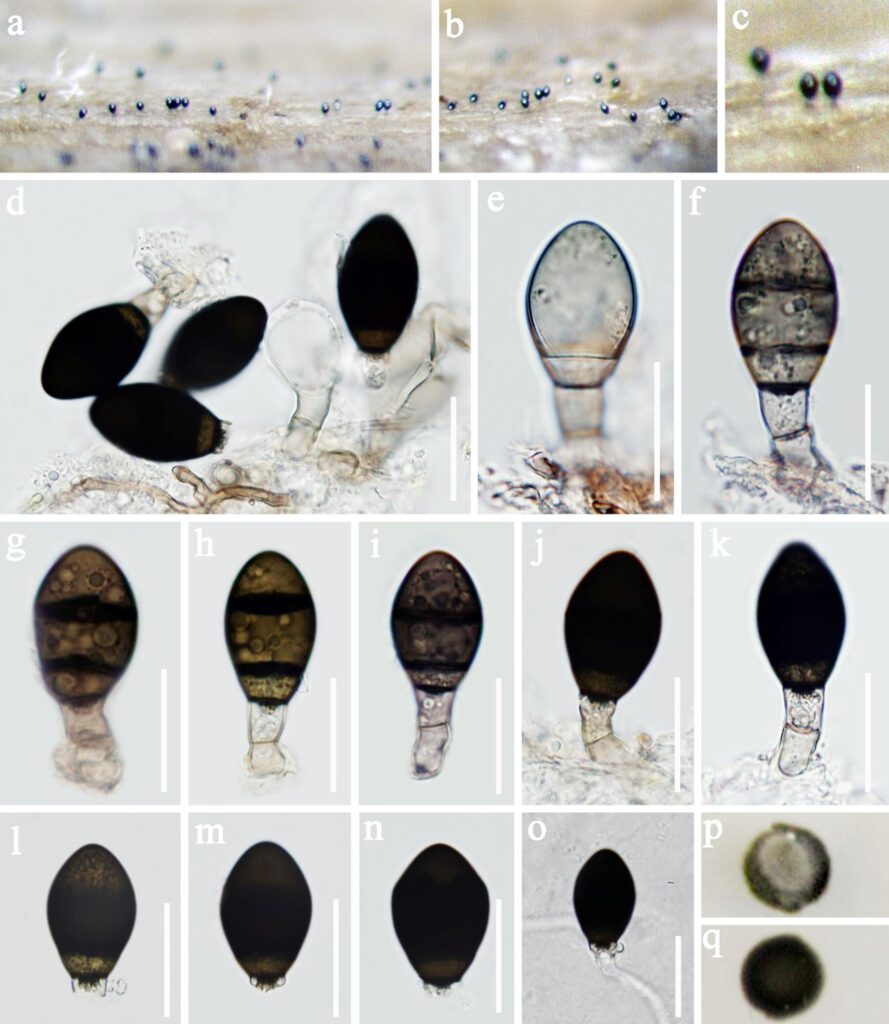Neoascotaiwania aquatica D.F. Bao, H.Y. Su, K.D. Hyde & Z.L. Luo, sp. nov. FIGURE. 2
MycoBank number:MB; Index Fungorum number: IF; Facesoffungi number: FoF 10415;
Etymology: — referring to the aquatic habitat of this fungus.
Holotype: — HKAS 115790
Saprobic on decaying wood submerged in freshwater stream. Sexual morph: Undetermined. Asexual morph: Colonies scattered, glistening, black, spot on the substratum. Mycelium mostly immersed, consisting of hyaline, septate, branched hyphae. Conidiophores 11–17.5 × 5.5–6.5 µm (= 14.4 × 6.0 µm, n = 25), semi-macronematous, mononematous, solitary, simple, erect, cylindrical, short, subhyaline to pale brown, 1-septate, smooth. Conidiogenous cells monoblastic, integrated, terminal, cylindrical, subhyaline to pale brown. Conidia 23–26 × 14.5–17.5 µm ( = 24.6 × 16 µm, n=35), acrogenous, fusiform, gradually becoming narrower towards the apex, lacerate at the base, subhyaline when young, becoming dark brown at maturity, paler at the basal cell, smooth, thick-walled, (1–)2-septate.
Culture characteristics: Colonies growing on PDA, reaching 25 mm diam after 4 weeks at 25 °C. Culture from above, hairy or cottony, grey to dark grey, rough surface, crescent-shaped protuberance in the center of the colony, reverse dark brown, crescent-shaped depression in the center.
Material examined: — CHINA, Yunnan Province, on decaying wood submerged in Nujiang River, July 2016, Z.L. Luo, S-866 (HKAS 115790, holotype), ex-type living culture, KUNCC xxxx

Figure 2. Neoascotaiwania aquatica (HKAS 115790, holotype) a–c. Colonies on wood. d–k. Conidiophores with conidia. l–n. conidia. p–q. Cultures on PDA from above and below. Scale bars: d–o = 20 µm.
